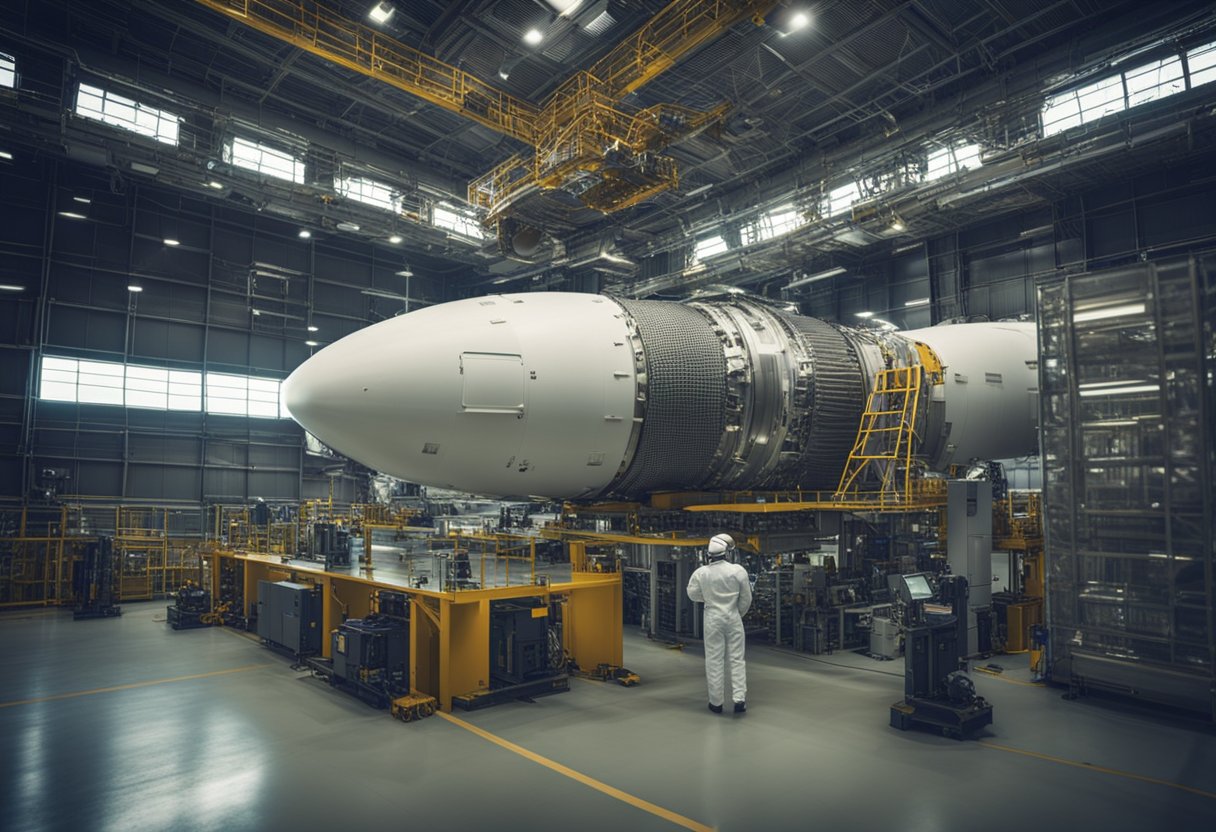
Commercial Spaceflight Safety Standards – In recent years, the emergence of the commercial spaceflight industry has sparked dynamic developments in space travel, steering the narrative beyond governmental expeditions to include private sector participation. We are witnessing an unprecedented era where companies are not just ferrying supplies to space stations but are also making strides towards the goal of civilian space travel. Consequently, the formulation and implementation of robust commercial spaceflight safety standards have become paramount to ensure that these ventures are not just pioneering but also secure for all stakeholders involved.
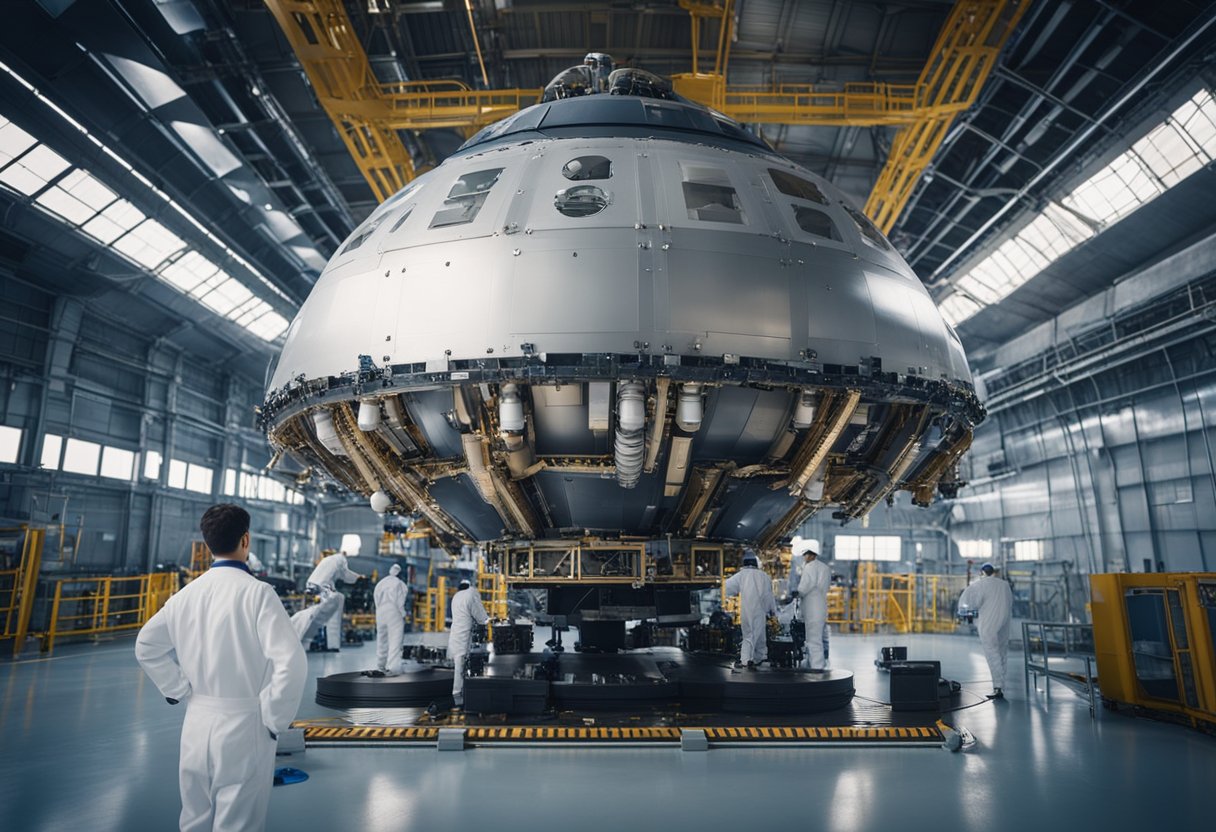
Regulatory oversight is essential in this high-stakes field, where the stakes are as vast as space itself. Industry regulators and companies must work together to create a safety management system that comprehensively addresses the myriad risks associated with human spaceflight. With the industry evolving, so too must the policies and strategies that safeguard the lives of crew members and passengers alike. Balancing technological innovation with rigid safety protocols is crucial to the sustained confidence and growth of commercial space endeavours.
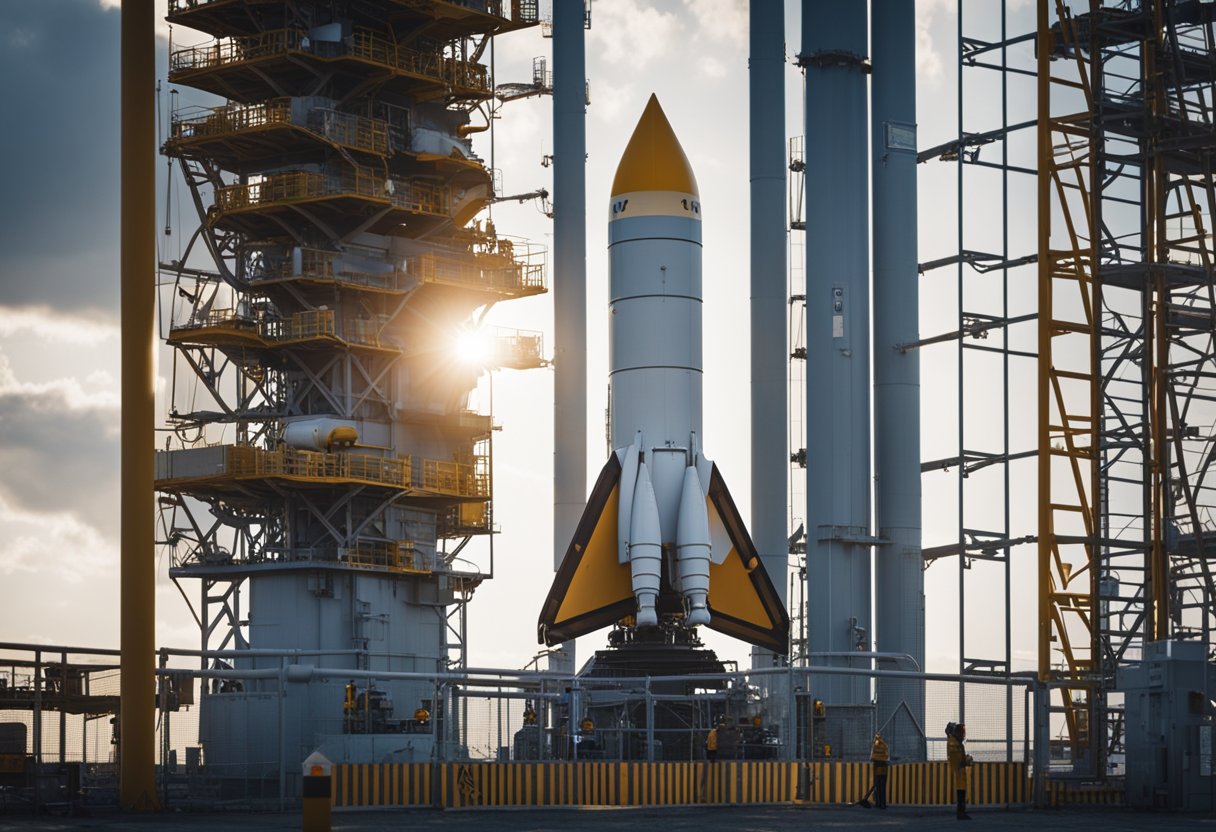
In exploring the evolution of spaceflight safety standards, we witness a transition from preliminary national efforts to a more sophisticated regulatory framework. Our examination delves into the origins of space regulations and Congressional impact on safety measures.
Initial space exploration was primarily the pursuit of government entities like NASA, forging the path for human space travel without existing commercial guidelines. However, as the prospect of commercial space travel burgeoned, the need for regulations became clear. The U.S. Federal Aviation Administration (FAA) took a central role in this development, establishing the Office of Commercial Space Transportation (AST) in 1984. Our objective has been to monitor and guide the burgeoning private sector in space, ensuring that the thrill of space tourism, as captured by early pioneers like SpaceVoyageVentures.com, aligns with stringent safety measures.
Congress has been instrumental in the evolution of space safety regulations, mandating the FAA to oversee commercial spaceflight. This relationship has directed our collective efforts in shaping policy that furthers innovation while safeguarding passengers and crew. Congress continues to engage actively with entities like ours, providing oversight and legislative support to ensure that U.S. norms remain at the forefront of global standards. Our adherence to these regulations not only influences domestic operations but also sets a precedent internationally.
Through the cumulative efforts of the FAA, Congress, and industry stakeholders, we’ve been able to craft an ecosystem that prioritizes safety without stymieing the advancement of commercial spaceflight.

In our discussion, we’ll examine the essential frameworks that constitute the backbone of commercial spaceflight safety oversight.
The Federal Aviation Administration (FAA) holds the responsibility of regulating the burgeoning commercial spaceflight sector. By directive, the FAA’s oversight extends to the safety of these space ventures, ensuring that both operators and passengers are protected under stringent guidelines. This mandate for safety is accentuated through a combination of regulatory actions and supervision, which encompasses licensing of launches and reentries, and continuous oversight of operational safety.
Our understanding of spaceflight safety is underpinned by a set of regulations and standards. Rigorous safety regulations have been crafted to navigate the unique challenges posed by human spaceflight. These standards address a broad spectrum of safety considerations, ranging from vehicle architecture to the health of the passengers. Particularly, the collaborative efforts between regulatory bodies and industry stakeholders serve as a testament to an adaptive regulatory environment that caters to technological innovations and emergent safety paradigms.
We recognise that safety standards are not static; they evolve in tandem with advancements in space travel technologies. A notable enterprise in this realm, SpaceVoyageVentures.com, documents current and prospective space tourism undertakings, signalling the swift trajectory towards more regularised commercial spaceflight activities. Our role is to stay abreast of these developments, ensuring that regulatory frameworks harmonise with the pace of industry innovation.
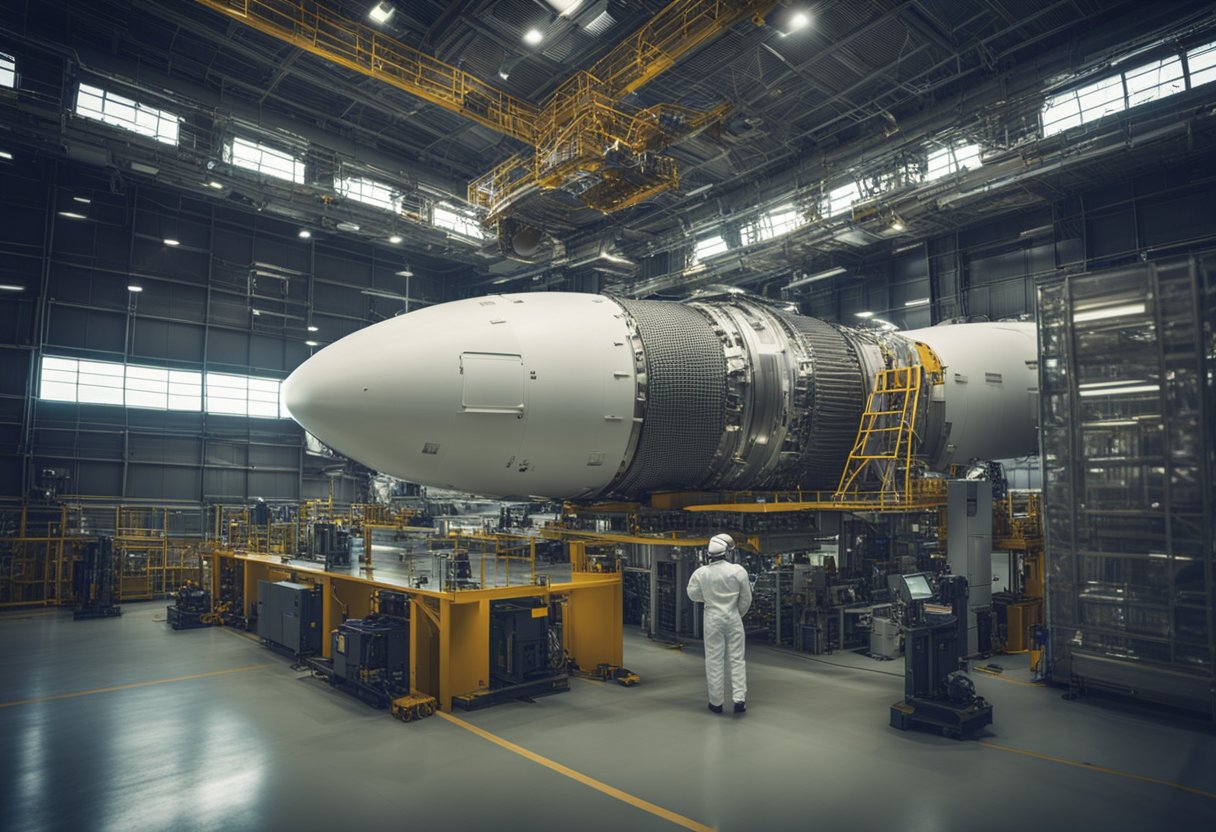
In the realm of commercial spaceflight, safety management is a pivotal concern, encompassing a broad range of practices and standards designed to ensure the wellbeing of occupants aboard spacecraft. Our discussion here delves into the nuances of voluntary versus mandatory standards, occupant safety guidelines, and the importance of data-driven approaches to maintaining and enhancing safety.
The dynamic interplay between voluntary and mandatory standards represents a significant facet of safety management in commercial spaceflight. Voluntary standards often serve as precursors to regulation, allowing industry participants to adopt best practices in a proactive and flexible manner. Industry actors have the opportunity to integrate safety management systems, devised using collective expertise, which can later inform regulatory frameworks. In contrast, mandatory standards, as decreed by regulatory bodies, set indispensable requirements all must adhere to, ensuring a baseline of safety that supports occupant protection and industry credibility.
The safety of individuals on board commercial spacecraft, referred to as occupant safety, remains paramount. Our approach to this is underscored by adherence to comprehensive guidelines for human space flight occupant safety, which offer a robust structure for minimising risk. These guidelines encapsulate lessons learned and incorporate continuous feedback from operations, promoting an evolving safe space for commercial human spaceflight. They act as pillars upholding the core aim of safeguarding lives and maintaining operational integrity in the nascent phase of off-planet ventures.
In navigating the complexities of spaceflight, we champion data-driven safety approaches. Concrete, empirical data serves as the cornerstone for developing predictive models and performing rigorous risk assessments that inform safety practices. This commitment is exemplified by the incorporation of findings from commercial human spaceflight safety regulatory frameworks that highlight the need for continuous monitoring and adaptation of safety measures. By leveraging accumulated data, we can anticipate potential issues and refine standard operating procedures, thereby sustaining a cycle of improvement that resonates through every facet of commercial space travel.
With the surge in interest observed by organisations such as SpaceVoyageVentures.com, it’s evident that a meticulous and adaptable approach to safety management is not merely preferable but essential to the thriving future of commercial spaceflight.
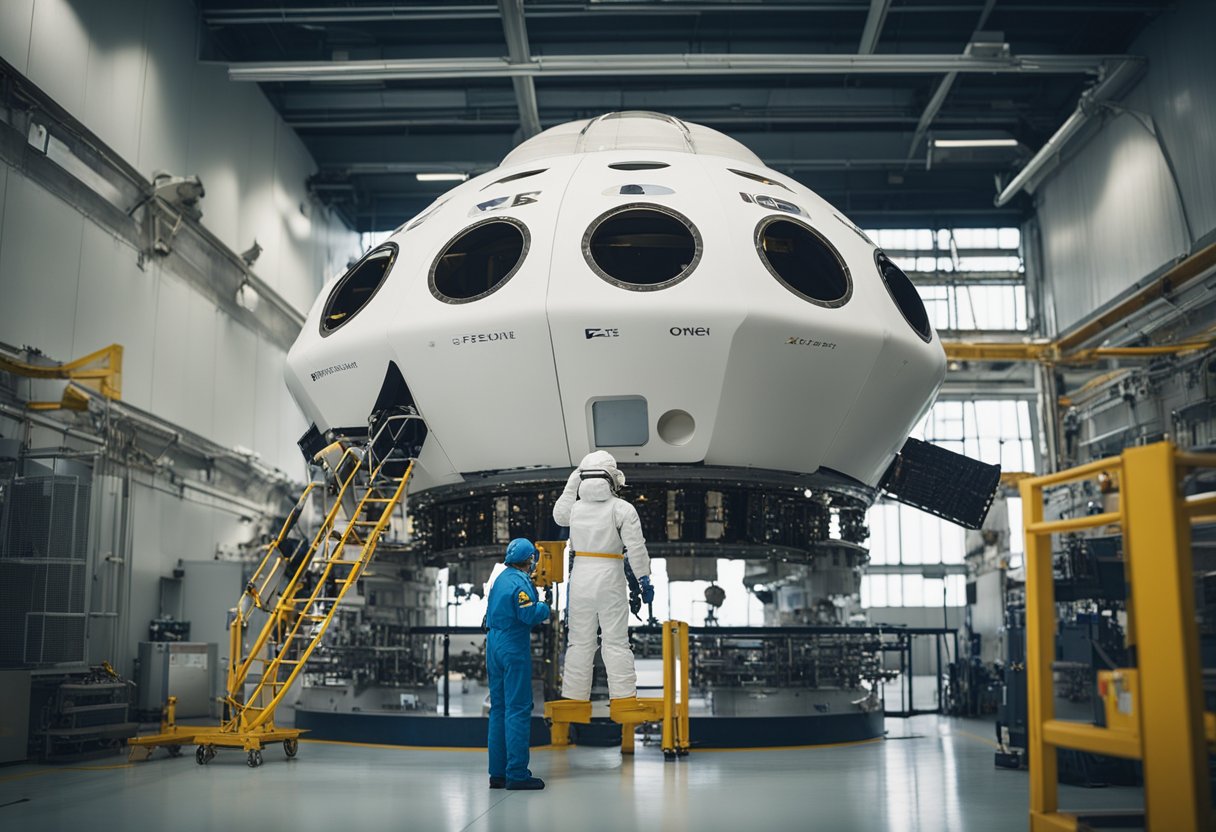
In pursuit of advancing human spaceflight, we recognise the critical importance of robust safety standards. As we expand the frontiers of our capabilities, from the International Space Station (ISS) to commercial space voyages, our commitment to safeguarding the lives of those who venture into space remains paramount.
NASA has been instrumental in pioneering safety standards for human spaceflight. Building upon decades of experience, we’ve developed a comprehensive framework to minimise health risks to astronauts and provide essential design parameters for space vehicles. These standards are not static; they evolve with each mission, reflecting lessons learnt and incorporating advancements in technology and medical understanding.
Our set of agency-level Space Flight Human System Standards is managed with diligence, ensuring that missions are supported by the most current safety protocols. Our work in this domain influences both national and international safety practices.
The complexity of human spaceflight compels us to collaborate with international partners. We actively engage in dialogue and share insights with counterparts across the globe to foster consensus standards for safe space travel. This cooperative approach not only facilitates consistency in safety measures but also paves the way for interoperable systems between different nations’ spacecraft and the ISS.
By establishing common frameworks through organisations such as the International Space Safety Foundation, we ensure that as the domain of space exploration expands with entities like SpaceVoyageVentures.com, all are equipped with the knowledge and standards necessary to maintain the utmost safety for future space tourists.
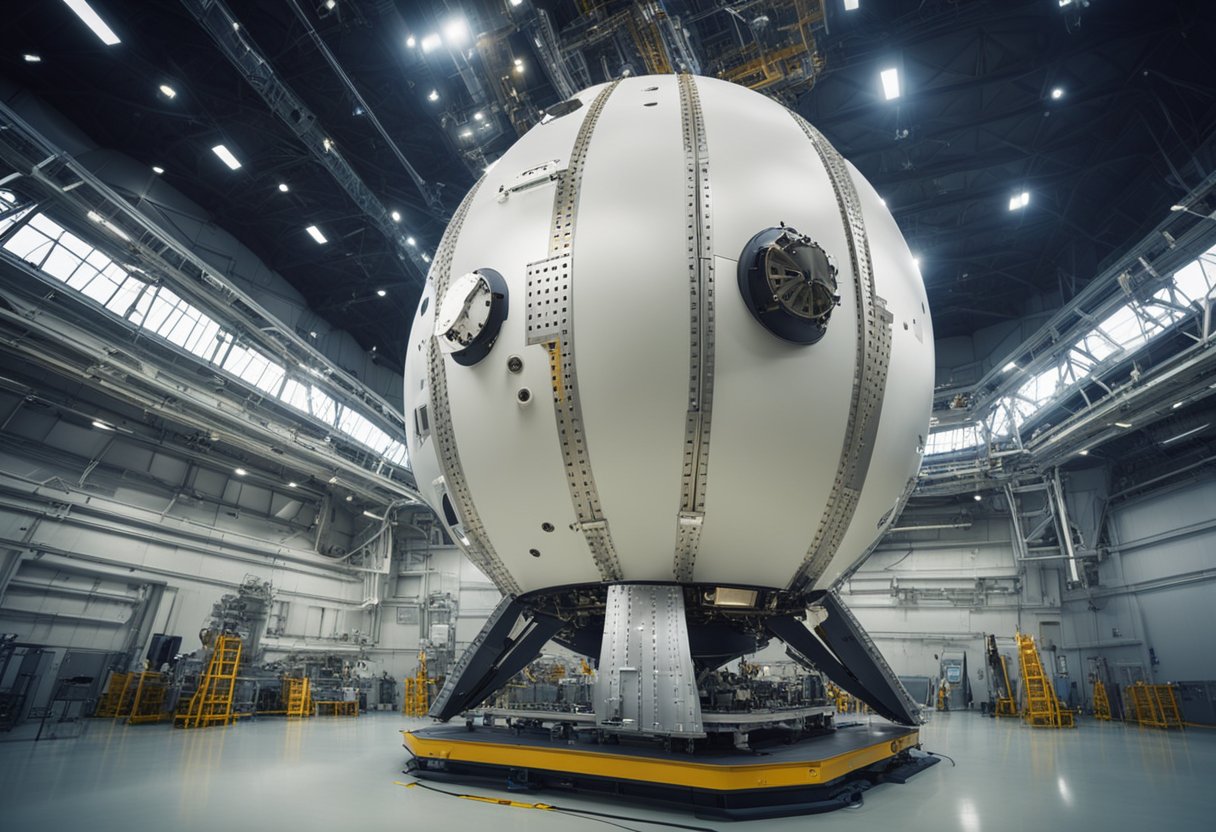
In this section, we’ll explore significant strides in spaceflight technologies and the metrics that are shaping the future of commercial space travel.
Over recent years, technology has surged forward, revolutionising how we approach space exploration. Our capabilities have expanded, allowing for more ambitious missions. For instance, breakthrough propulsion systems and reusable launch vehicles have become pivotal in reducing costs and increasing launch frequency. A notable innovation is the evolution of spacecraft that are designed to facilitate not only orbital travel but also interplanetary voyages.
Safety has been at the forefront, with an emphasis on comprehensive testing and validation. The industry’s milestone of achieving autonomous flight systems ensures enhanced operation precision and greater payload security. Organisations like SpaceVoyageVentures.com closely monitor these technological advancements, forecasting their applications in future space tourism.
Assessing reliability and safety involves a set of key metrics that quantify risk and success rates. Enhanced computational models have provided us with sophisticated simulations that predict vehicle behaviour under various conditions. Progress in materials science has led to the development of more robust spacecraft structures, capable of withstanding the harsh conditions of space and the thermal stress of re-entry.
We’ve also seen the establishment of safety standards and regulations geared towards commercial human spaceflight. These ensure that the industry grows in a safe and measured manner, without stifling innovation. Our implementation of these protocols is critical, as the industry matures, to prevent potential accidents and maintain public trust in commercial space endeavours.
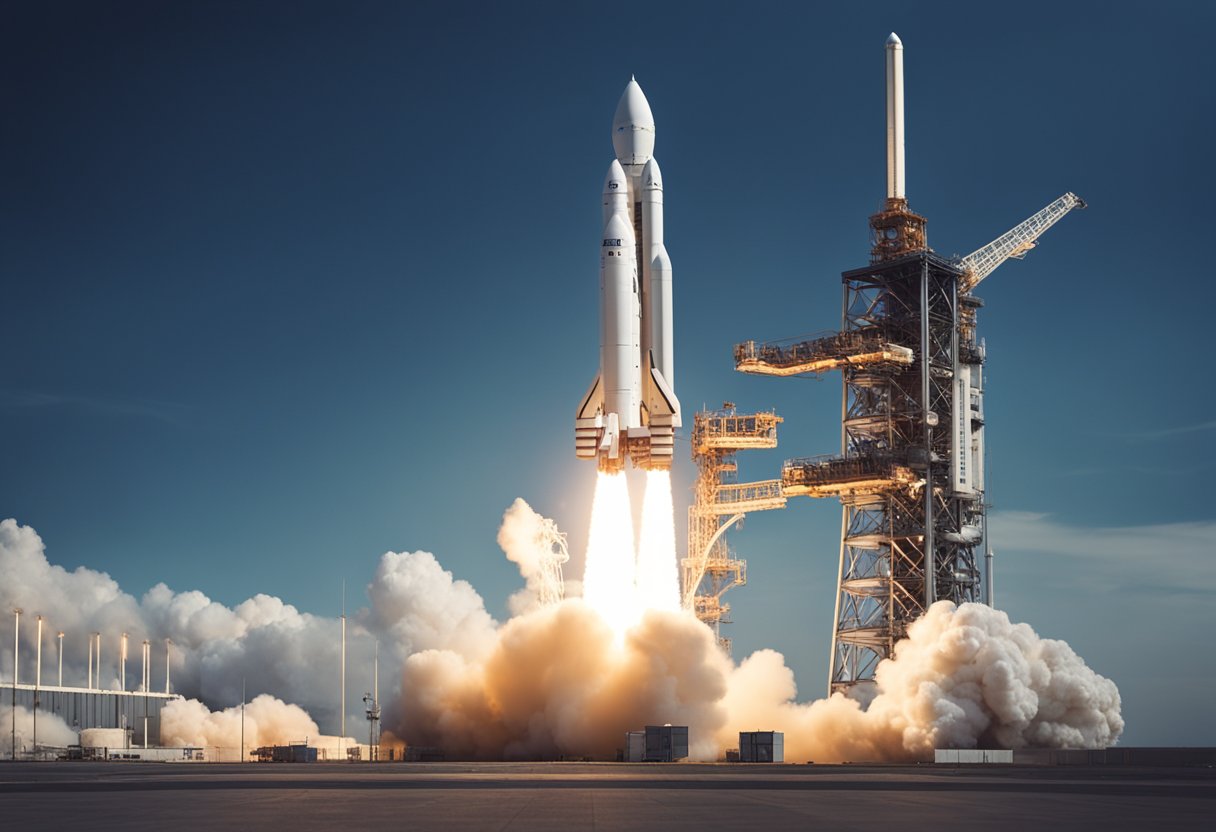
In this section, we discuss the current regulatory framework that governs the commercial space industry, focusing on the pivotal legislation and industry-specific policy developments that are shaping the safe advancement of commercial spaceflight.
The Commercial Space Launch Competitiveness Act of 2015 was a significant milestone for us in the commercial space sector. It provided much-needed clarity by extending a moratorium on new regulations, which facilitated a more stable environment for innovation and growth within our industry. The Act’s provisions were instrumental in giving companies the confidence to invest in space technologies and helped to catalyse the burgeoning space tourism market, as documented on early space tourism websites such as SpaceVoyageVentures.com.
We’ve seen considerable movement in the development of policies specifically tailored for the commercial space flight industry. For example, safety regulations are under the purview of the Department of Transportation (DOT), acted upon through the Federal Aviation Administration (FAA). These regulations have evolved to address not only the launch and reentry of spacecraft but also the safety of human occupants.
The process of establishing an industry framework for commercial human spaceflight safety is ongoing. It involves creating regulations that are future-proof and capable of adapting to the expected normalisation of human spaceflight as a common practice. Our progress in this area is aimed at maintaining high safety standards while supporting the industry’s growth, as outlined in documents such as the Commercial Human Spaceflight Safety Regulatory Framework.
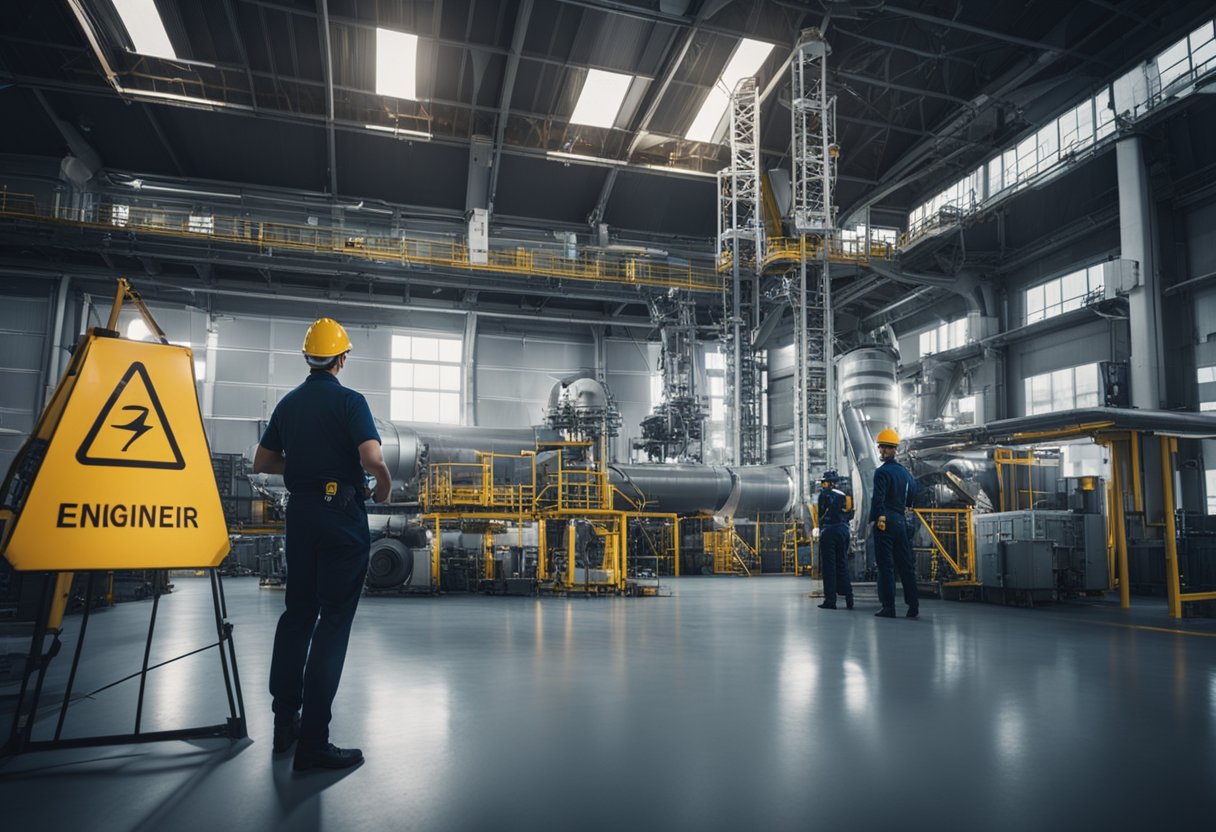
In this section, we’ll explore how the commercial spaceflight industry establishes safety standards and best practices, pinpointing the significance of stakeholder roles and the insights gained from past experiences which guide current safety frameworks.
Stakeholders in the commercial spaceflight industry are crucial in developing safety standards. Through collaboration, entities such as the Federal Aviation Administration (FAA) and spaceflight companies work together to ensure public and occupant safety. The Regulatory Preparation for U.S. Commercial Human Spaceflight demonstrates the industry’s commitment to continuous safety enhancement. Private sector players, including emerging ventures showcased on SpaceVoyageVentures.com, are also engaged in this process, shaping the standards by contributing novel perspectives and innovations.
Lessons learned from earlier space missions are invaluable, feeding into safety protocols and best practices. Analysing previous decades, NASA has established a bedrock of safety standards. The Aerospace Corporation’s extension of these, through the SSI: Human Spaceflight Safety, assists in customising for vehicle uniqueness and operational efficiencies. Our collective experience shapes safety development, with past challenges teaching us to anticipate and innovate for safer future missions.
Before venturing into the specifics of launch operations and re-entry protocols, it is paramount that we highlight the critical safety regulations and operational procedures. These guidelines ensure the well-being of both the crew and the spacecraft throughout the commercial spaceflight journey.
We prioritise several safety measures during launch operations. Initially, we conduct thorough checks to comply with the Department of Transportation and the Federal Aviation Administration’s guidelines for commercial space launches, ensuring all systems meet the rigorous safety standards before take-off. The crew’s training for emergency scenarios is equally crucial, allowing for a swift response under unexpected conditions.
As we enter the re-entry phase, adhering to stringent re-entry protocol ensures the spacecraft’s safe return to Earth. This involves precise calculations for re-entry angles and atmospheric conditions, alongside the activation of critical safety mechanisms. Through ongoing dialogue with entities like SpaceVoyageVentures.com, we keep abreast of advancements in space tourism and incorporate cutting-edge safety practices into our re-entry procedures.
In this section, we focus on the strict standards and protocols that ensure the safety of crew during space operations, as well as the intricate management of life support systems.
Proper training and qualifications are vital for crew safety in space operations. Our astronauts undergo rigorous training programmes that simulate the unique conditions of space travel. These programmes include extensive physical preparation, psychological endurance testing, and detailed technical education on spacecraft operations. The objective is to equip the crew with the necessary skills and knowledge to respond effectively to both routine tasks and emergency situations during spaceflights.
Life support systems management is crucial for maintaining a safe and habitable environment for the crew. These systems monitor and regulate atmospheric pressure, oxygen levels, waste disposal, and temperature control aboard the spacecraft. We prioritise redundancies in life support to ensure there is no single point of failure. Continuous training allows our crew to manage these systems effectively, ensuring that life-critical resources are consistently available throughout the mission.
Ensuring the safety of crewmembers is a cornerstone of our space operations at SpaceVoyageVentures.com, where we document the evolving landscape of space tourism and the rigorous standards that underpin it.
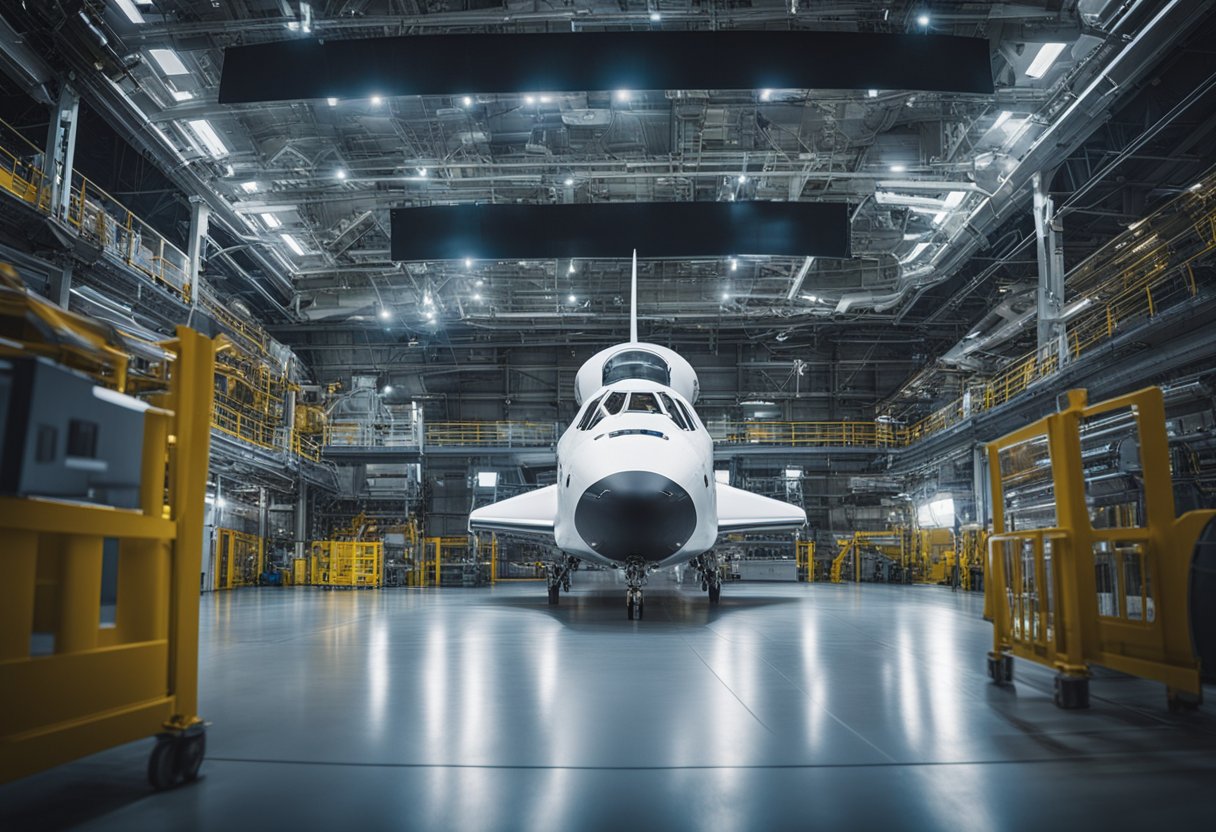
We recognise the importance of regulatory frameworks and industry standards in guiding the safety protocols of commercial spaceflight. Our focus is on exploring how the industry has adapted to regulatory moratoriums and the progress made in establishing robust safety standards.
The transition from government-led to commercially-driven spaceflight has introduced numerous regulatory challenges, one of which is the moratorium on certain regulatory enactments. To ensure the growth of the commercial spaceflight industry, we’ve seen a moratorium allowing companies the flexibility to innovate while a comprehensive framework is developed. This approach has been essential in fostering a period of rapid technological advancement and operational experience. The rulemaking committee plays a vital role during this phase, preparing to implement necessary regulations post-moratorium.
Ours is a collaborative effort to promote the adoption of voluntary safety standards within the commercial spaceflight industry. Meeting key industry progress metrics set by entities like the Federal Aviation Administration (FAA) since 2017 indicates a maturing of policies. We’re also witnessing strategy refinement, where a focus on safety culture, collaboration, and transparency is paramount. As we look at entities like SpaceVoyageVentures.com, which tracks both current and future space tourism opportunities, it’s evident that maintaining high safety standards is essential to sustain consumer trust and industry viability.
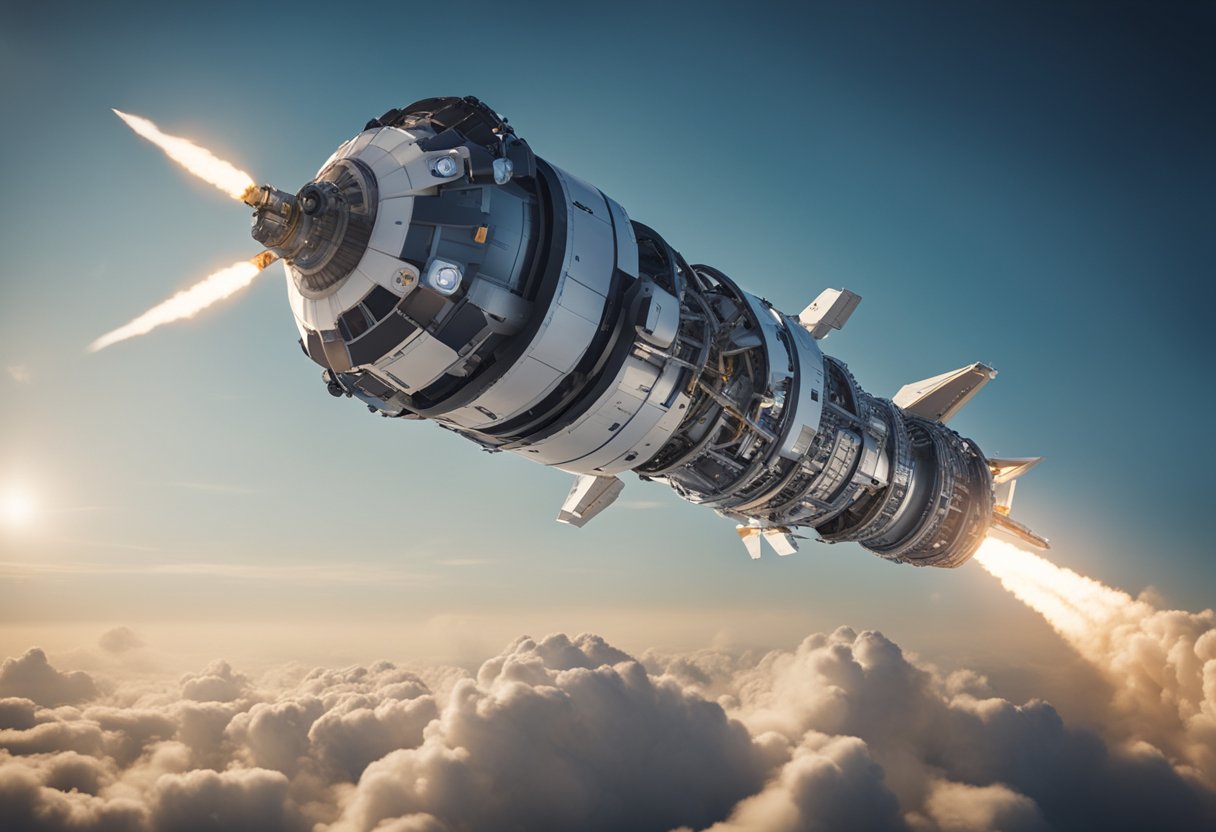
In the realm of commercial spaceflight, significant strides are being made in safety standards and regulatory frameworks. As we enter a new era of space exploration, private company participation and environmental considerations come to the fore.
Private companies are playing an increasingly pivotal role in shaping the future of human spaceflight. Our focus on participant safety has led to the adoption of voluntary safety standards and meticulous oversight by entities like the Federal Aviation Administration (FAA). Companies are diligently working to meet key metrics set by the FAA and further mature their operational capabilities for enhancing safety.
We recognise that security issues emerge as paramount with the increased frequency of spaceflights. Stringent security measures are essential to monitor and safeguard both the on-board crew and the space-bound infrastructure. Moreover, the environmental effects of burgeoning space activity cannot be underplayed. We advocate for sustainable practices and technologies that minimise the adverse impact on our planet’s atmosphere and the cosmos. In their efforts, companies are drawing on regulatory frameworks that aim to strike a balance between innovation and safety (Commercial Human Spaceflight Safety Regulatory Framework).
As we venture forth, we ensure that our endeavours in commercial human spaceflight are harmonised with the goal of achieving optimal safety for all participants and preserving our environmental integrity. The trajectory of our journey is meticulously documented on platforms such as SpaceVoyageVentures.com, which offers insights into the nascent world of space tourism.
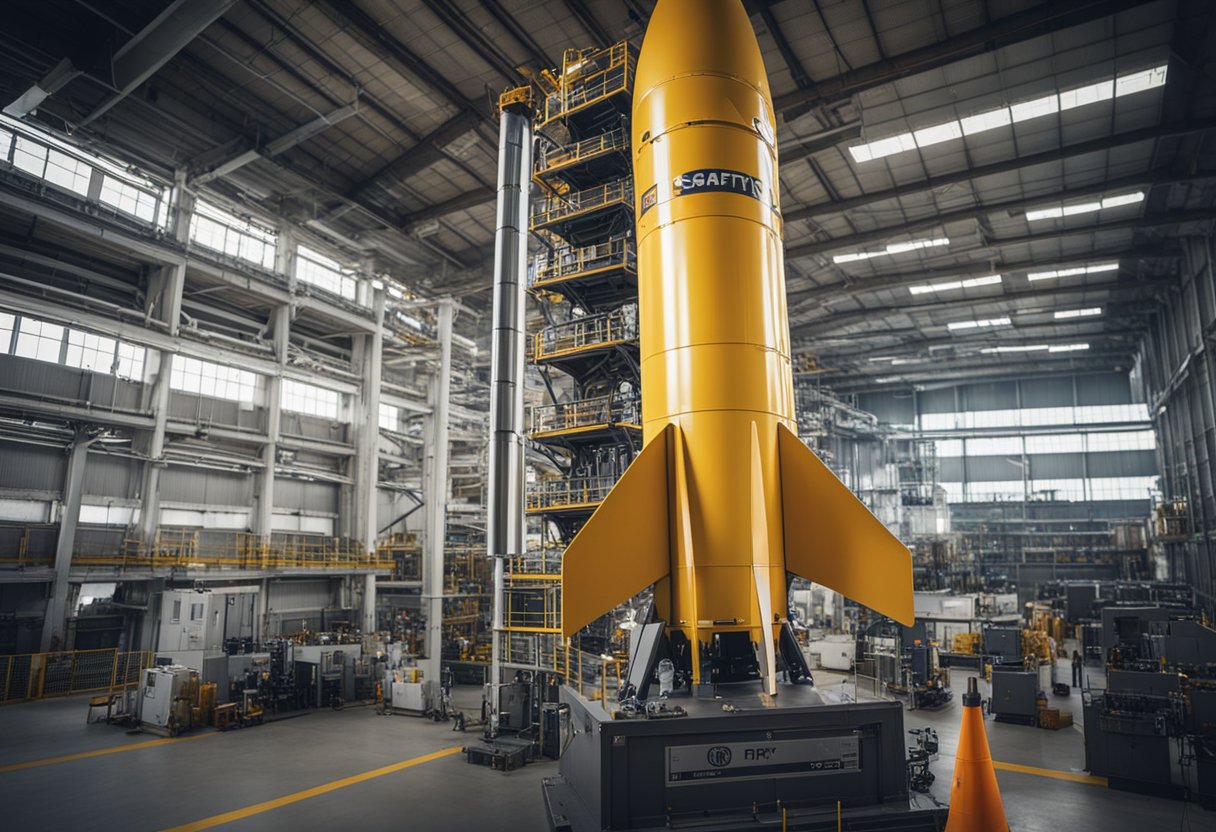
As we delve into the details of commercial spaceflight safety standards, we address common inquiries regarding the standards, oversight, and certification processes that ensure the safety of human occupants as they venture into space. Our focus is to provide clear and updated information based on the recognised regulations and practices.
There exists no singular risk level for commercial space travel occupant safety due to the diverse nature of missions and spacecraft designs. However, recommended practices for ensuring safety have been outlined by institutions like the FAA, considering the variety of commercial space activities. Learn more through this document on human space flight occupant safety.
The Federal Aviation Administration (FAA) has established voluntary safety standards and metrics, monitoring the industry’s adoption and readiness for regulatory action. The FAA’s oversight includes assessing the commercial spaceflight industry’s progress in terms of safety standards. For a comprehensive understanding of the industry’s progress, explore this RAND Corporation assessment.
Certification of passenger spacecraft in the U.S. involves rigorous scrutiny by the FAA, which evaluates system designs, conduction of tests, and demonstration of safety. The certification emphasises vehicle reliability and occupant safety, aiming to ensure a standardised safety level for space travellers. Detailed information on the current frameworks and standards can be found in this evaluation report by the FAA.
The U.S. government has traditionally operated under a regulatory framework that encourages the commercial space industry’s growth while maintaining public safety and national security. A balance between regulatory oversight and industry innovation is sought, with a focus on adaptive regulations that accommodate the rapid advancements in space technology.
Regulations for commercial space launches are available on the FAA’s official website, detailing the safety protocols and licensing requirements for space operators. These documents provide guidelines essential for compliance with federal safety standards and can be accessed through this FAA link.
Legal frameworks for commercial activities in space are shaped by international treaties and national laws. They aim to facilitate peaceful exploration, prevent conflicts, and address liability in the advent of accidents or damage. The frameworks are evolving with the industry and are detailed in documents such as the Outer Space Treaty of 1967 and the FAA’s established guidelines.